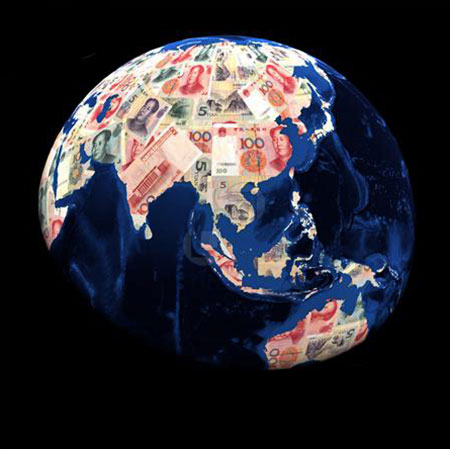
by Dow Jones Business News
June 29, 2014
from
NASDAQ
Website
|
William Horobin in Paris and
Tommy Stubbington in London
contributed to this article |

In its continued push to make the yuan a global
currency, China's central bank said Sunday it plans to designate clearing
banks for its currency in Paris and Luxembourg, as the two
financial centers battle with London to become the leading European offshore
yuan-trading city.
The People's Bank of China (PBOC)
announced the move in two separate statements Sunday. It didn't say when it
would designate the clearing banks.
The French and Luxembourg central banks said Sunday they had signed
agreements with PBOC allowing for greater cooperation in the oversight of
their domestic yuan market.
The weekend moves are the latest salvos in the race to win a major share of
business in cross-border transactions in the Chinese currency. Singapore and
Sydney are also vying for a significant share of the global yuan market,
which is expected to expand rapidly along with China's fast-growing economy.
On June 18, the PBOC appointed China Construction Bank Co., one of
the country's top-four state-owned banks, to clear yuan-related transactions
in London. It became the first yuan clearing bank in a European country.
Opening a clearing bank is a critical step in developing an offshore yuan-based
business. The designated banks will be able to supply yuan liquidity in case
of a shortage by directly accessing China's onshore currency market.
The Chinese central bank said that setting up the clearing banks will
benefit Chinese, French and Luxembourg,
"businesses and financial institutions in
using the renminbi [yuan] for cross-border transactions and in further
promoting trade and investment."
French authorities have openly pushed for Paris
to become a center for yuan transactions.
In March, China also granted 80 billion yuan ($12.9 billion) of quotas to
French financial institutions that enable direct investment in the Chinese
domestic financial market.
The Bank of France said Sunday the latest decisions by the PBOC
"confirm the prominent role of the French market place" in cross-border use
of the currency.
Luxembourg, home to a powerful asset-management industry, has built strong
ties with Chinese investors in recent years and currently hosts the European
headquarters of China's three leading banks.
Last year, former Luxembourg Finance Minister Luc Frieden cited
figures showing that the country was the leading center for yuan business in
the euro zone, with some 40 billion yuan in deposits, 62 billion yuan in
loans from Luxembourg banks and 220 billion yuan under management in the
fund industry.
For China, the move to allow the yuan to be used more freely abroad aims to
boost demand for the currency and reduce the amount of dollars entering the
country. China still maintains a tight grip on the yuan's value, with its
trading strictly controlled in the mainland market.
A surge in foreign-currency capital inflows in the past several years has
contributed to a property bubble in China and excess liquidity in the
country's financial system.
For the long term, China wants to turn the yuan into a global reserve
currency that is used for investment, trade and loans, as are the dollar
and euro. A widely accepted yuan could help Chinese companies alleviate
foreign-exchange risks.
In addition to designating a clearing back in London earlier this month, the
PBOC also announced on June 18 that the yuan can now be exchanged directly
for British pounds in Shanghai's foreign-exchange market. Previously,
traders have had to exchange the currencies through the U.S. dollar, which
added to transaction costs.
In 2013, yuan foreign-exchange trading in London reached $25.3 billion a
day, up 50% compared with 2012, according to data released earlier this
month.
China's currency has become increasingly popular in settling total trade. In
the first three months, 18% of China's total trade, or 1.09 trillion yuan,
was paid for in yuan, up from 14% in the fourth quarter of last year,
according to Bank of China.
That compares with just 1% of China's total
cross-border trade five years ago.

